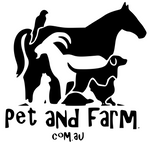Description
- Safe & humane small bird capture
- Easy to set up & use
- Trapped birds can be released or disposed of
- Versatile trap suitable for various species
The Small Bird Trap is ideal for the safe and humane capture of pigeons, starlings, magpies, crows, ravens, myna, small chickens, and birds of similar size and couldn’t be simpler to set.
Place suitable bait (seed, grain, chick starter pellet, fruit, wheat, or bread) in the central bait pan while holding the netting frame in the open position- this prevents misfire since the trigger mechanism is so light whilst setting the trap.
As soon as the bird lands and jostles the bait pan, the spring-loaded netting hoop flips over and traps the bird inside. The bird is neither injured nor killed. Trap should be checked regularly to ensure a timely removal of the captured bird. Trapped birds must only be killed by humane methods with minimal delay.
We recommend setting the trap a few times before use in the field to ensure absolute competence. Steel construction with green nylon capture mesh.
Tip: Pre-bait the trap for several days by wiring the spring-loaded door into the open position. Once the birds are coming freely to the trap, simply remove the restraining wire.
Overall dimensions 42 x 42cm.
The optimum time for trapping will often vary depending on the species of bird and the type of crop being protected. During the breeding season most birds are territorial and so trapping may be less effective. At other times of the year, particularly during autumn/ winter when food is less abundant, birds may form large flocks and many birds can be caught. However, the efficacy of trapping in terms of reduced density or damage also needs consideration. For example, for bird species with high rates of fecundity (e.g., starlings and mynas) removing birds during or just prior to the breeding season may cause greater reductions in density in the long term or for the approaching ripening season. To minimise the animal welfare implications of leaving dependent nestlings and chicks to die from starvation it is preferable not to undertake trapping during the nesting season. If trapping must occur during nesting, reasonable efforts should be made to find nest hollows containing young birds so they can be killed quickly and humanely. Special care and knowledge are necessary for holding or restraining birds, and the most appropriate method should be used for each species. Care must be taken when handling birds (especially pest species) as they may carry diseases that can affect humans and other animals.
NOTE: Any control of pest birds must be implemented in accordance with any relevant State, Territory and Commonwealth legislation. Permits may be required for the control of some species. Contact the relevant State/Territory fauna agency for further details.






